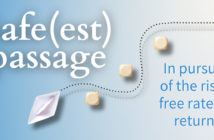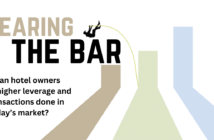by Rushi Shah
If you are looking to purchase, improve, or refinance a hotel, you may want or need to attract third-party investment, often called OPM or “other people’s money.” Before you kick off your search, know what to expect, what to look out for, and the different ways you can secure the capital influx you need.
First of all, keep in mind that there are a lot of talkers but few doers in the market. You may hear people throw around keywords such as joint venture equity, preferred equity, mezzanine debt, life company loans, property and casualty insurance, company loans, private equity investment, REIT investment, and more. Less-qualified intermediaries often name drop these flavor-of-the-day terms to seem fashionable and entice prospective clients.
While all of these are legitimate sources of third-party capital when used properly, there are specific realities for each source, and not every source is the right fit for every deal. It’s important to separate fact from fiction when comparing funding sources before you accept any terms and commit to what could be a significant cost of funds for your investments.
Bottom line, there is no free lunch when it comes to investing. Unless the source of capital is unsophisticated and uninstitutional, it’s typically not “dumb money.” All capital sources have access to the same information and won’t make investment decisions in a vacuum. All will ask the same questions and view the investment risks through a similar lens.
COMPARING INSTITUTIONAL OPTIONS FOR LONG-TERM DEBT
If your hotel is already stabilized, there are three institutional options for accessing the debt capital markets for long-term or permanent debt: insurance company money, bank and credit union conventional lending, and CMBS debt.
Insurance Companies
Insurance companies have real estate balance sheet allocations, but 98 percent of them don’t lend on hotels because of the perceived risk of the asset class. Those that will lend typically will go only as high as 60 percent loan-to-value (LTV) and only if the hotel is in a top-20 metropolitan area. In the recent competitive landscape, however, new, lower-rated insurance companies are expanding to hotels in search of higher-risk investments that will generate the desired level of returns for their policy holders. These firms will still cap hotel loans at 75 percent LTV, and they’re extremely selective on which deals and in which markets. These loans are borrower-favorable since they are non-recourse and typically offered at a longer, 10-year, fixed-rate term. Furthermore, unlike other types of non-recourse lenders, insurance companies typically don’t require a lockbox account or cash-management triggers. If you have an institutional-grade asset with major brands in a decent market, an experienced intermediary should be able to get you access to insurance company funding.
Banks & Credit Unions
Bank conventional lending is purely a relationship-based approach. After the new HVCRE (high-volatility commercial real estate) rules passed under the Dodd-Frank regulation, loans on hotel assets are no longer profitable for commercial banks. If a bank lends capital on a hotel, it will have to maintain an outsized capital reserve against the loan, compared to other asset classes. As a result, most bank credit committees redline hotels as an approved asset class. Some small, regional banks will lend on hotels, as long as other parts of the banking relationship are profitable. These would include bank deposits, loan payments, and wealth management.
Credit unions are another major participant in the conventional lending space that will lend on hotels. Because of their smaller sales infrastructure, most credit unions work exclusively through trusted intermediaries. Like banks and other conventional lenders, credit unions don’t lend to the hotel, they lend to the person who owns the hotel. This means your liquidity and net worth will be extremely important.
Commercial Mortgage-Backed Securities
Commercial mortgage-backed securities (CMBS) loans remain the most efficient way to access the highest leverage financing at the most reasonable interest rates in the debt capital markets. They are the only mechanism where no single investor is exposed to the whole of the asset’s risk. Instead, the risk is distributed among many large institutional investors. As a result, CMBS lenders are less selective than insurance companies and allow borrowers to access cash out at the highest loan-to-value, even if the asset is not uber-institutional, and/or is located in secondary or tertiary markets. Prudent hotel owners use this option to refinance, cash out, and remove personal recourse. Not only can you access naturally expensive equity capital at lower interest rates, you will be better prepared for any economic downturns.
OTHER CAPITAL MECHANISMS
Debt Funds
Debt funds are private equity vehicles that raise limited partnership (LP) money from private and institutional funds, then turn around and use it to make loans. Most LP investors require 10-12 percent IRR (internal rate of return). To achieve this type of return hurdles, the funds have to make loans at one month Libor plus 4 percent (at the time of this writing, the one month Libor is at 2.5 percent). The loan is typically interest only and exits into a permanent loan or a sale. Most debt funds do not allow cash out, making this type of loan best for transitional, value-add, and conversion loans, where there is a need to season the asset before selling it or refinancing to a permanent loan.
Mezzanine Debt & Equity
Both mezzanine loans and equity are good options for institutional quality assets in major markets. However, it’s extremely important to understand that mezzanine capital is risky for the investors because the investors are left with little collateral in an event of default. This is because the senior lien-holder is usually first in line and receives the lion’s share of the residual collateral. To offset this higher risk, investors tend to ask for a higher 14-percent rate on mezzanine capital.
Joint & Preferred Equity
Most joint and preferred equity providers have yield requirements ranging from 15-18 percent IRR. This is a key reason why equity deals fall apart. Most entrepreneurial hotel owners won’t even consider borrowing at these sky-high rates when they are used to and have ready access to 12-percent equity capital through other sources. Not to mention, equity investors – composed of ultra-high-net-worth individuals, family offices, hedge funds, private equity funds, public and private REITs, and successful developers – are extremely selective on the assets they back and the sponsors behind the assets.
Successfully navigating sources of OPM is a task where an experienced intermediary can be critical. He or she will understand the entire landscape and know how to structure the right deal upfront with the right type of financing and the optimal capital source, as well as help manage the deal process to ensure it gets to the closing table.
 Rushi Shah is principal and CEO of the commercial mortgage and real estate investment banking firm and AAHOA Club Blue Member Mag Mile Capital. As a leader in hospitality financing, Shah specializes in structuring and placing high-leverage, non-recourse bridge and permanent debt with cash out for full – and limited-service hotels nationwide. Since joining the firm’s predecessor, Aries Capital, in 2015, Shah has structured and closed hundreds of millions in financing for all property types. Shah has held previous positions at Northern Trust and has an MBA from the University of Chicago’s Booth School of Business.
Rushi Shah is principal and CEO of the commercial mortgage and real estate investment banking firm and AAHOA Club Blue Member Mag Mile Capital. As a leader in hospitality financing, Shah specializes in structuring and placing high-leverage, non-recourse bridge and permanent debt with cash out for full – and limited-service hotels nationwide. Since joining the firm’s predecessor, Aries Capital, in 2015, Shah has structured and closed hundreds of millions in financing for all property types. Shah has held previous positions at Northern Trust and has an MBA from the University of Chicago’s Booth School of Business.




